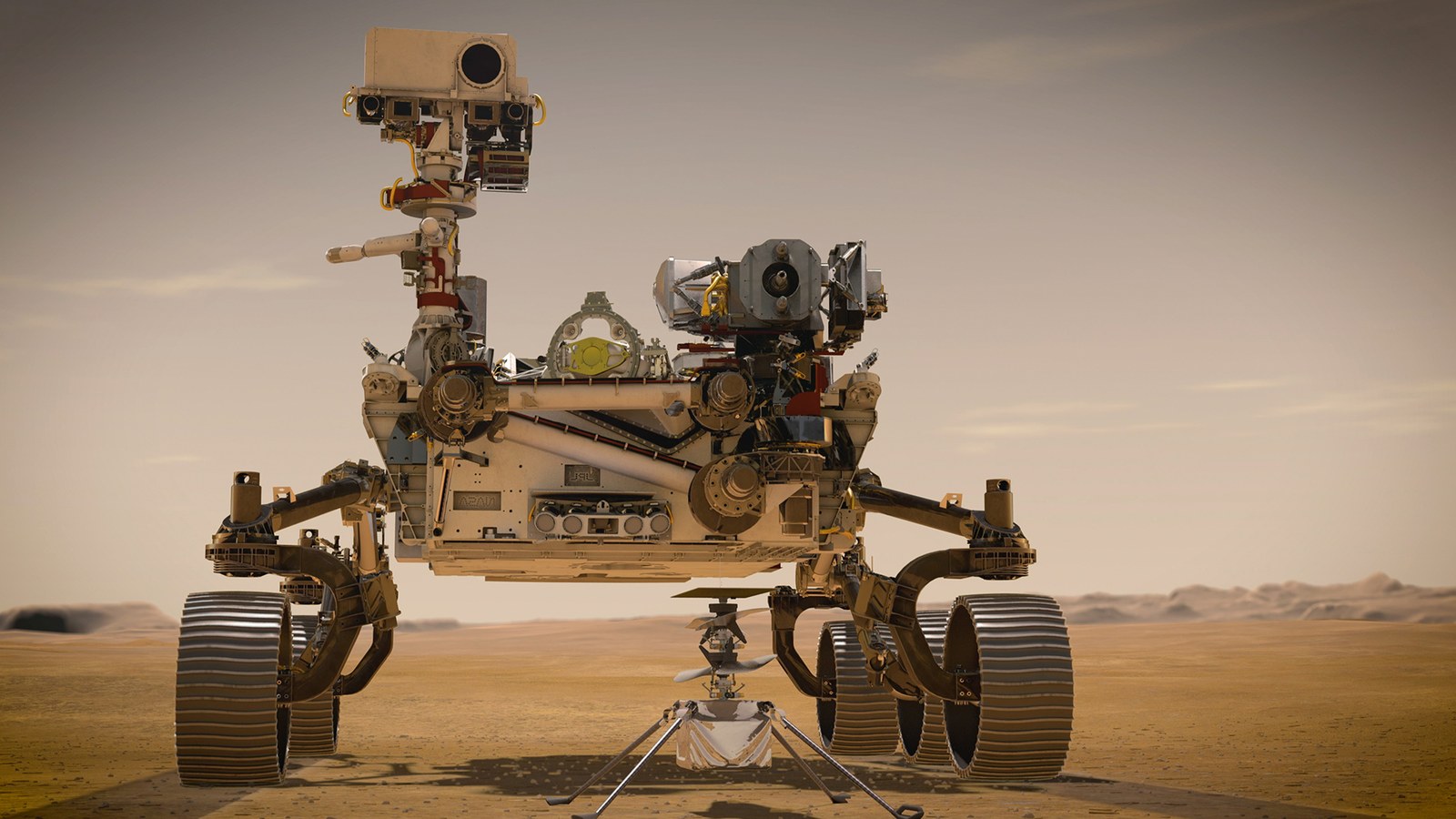NASA's Perseverance rover listens in the thin Martian atmosphere

Mars has a very thin atmosphere, which at the surface has a density approximately one percent that of Earth's. Until recently, it was unclear whether there is anything to hear in the barren landscape there and if it is even possible for sound to be recorded under these conditions. When NASA's Perseverance Mars rover landed on the Red Planet on 18 February 2021, it was carrying two microphones. A new study that has been published in the scientific journal Nature reveals that the speed of sound on Mars is slower than that on Earth. The study was conducted using sound recordings from the rover. A deep silence prevails, interrupted only by the hum and click of the rover's mechanical systems in the light Martian wind, the whir of the Martian helicopter's rotors or the noise of the plasma produced by the SuperCam laser during analysis of the Martian surface. The German Aerospace Center (Deutsches Zentrum für Luft- und Raumfahrt; DLR) is involved in the investigation of this plasma noise.
"Using the Schlieren method, we were able to visualise the sound waves of the plasma plumes, that are created during laser-induced breakdown spectroscopy (LIBS) in the laboratory under Mars-analogue conditions. We are particularly interested in how the acoustic signal is generated along with the microplasma," reports Susanne Schröder from the DLR Institute of Optical Sensor Systems in Berlin. SuperCam can vaporise rock material from distances of several metres and study the resulting plasma. These produce a high-pitched noise above two kilohertz. "The LIBS measurements are made at different distances from the rover, so the noise produced by the plasma is a good source for studying the speed of sound. It showed that on the Red Planet there are two different sound velocities, for frequencies above and below 240 hertz. The sound is also strongly attenuated, so that barely any sound can be heard after a few metres," Schröder explains.
After eight metres, (almost) silence
On Earth, sound normally travels at approximately 340 metres per second. But on Mars, low-pitched sounds travel at only 240 metres per second, while higher-pitched sounds travel slightly faster at 250 metres per second. The two speeds of sound are a result of the thin carbon dioxide atmosphere on Mars. It was expected that a cold, thin carbon dioxide atmosphere would affect the speed of sound in this way, but the researchers have now been able to actually observe this phenomenon for the first time. Another effect of the thin atmosphere is that sounds are only transmitted over a short distance, and high-pitched sounds hardly propagate at all. On Earth, sound can drop off after about 65 metres, but on Mars this occurs after only eight metres, with high-pitched sounds completely lost at this distance. Nevertheless, the microphone team managed to detect the low-pitched whirring sound of the Martian helicopter Ingenuity even at a distance of 80 metres.
Most of the sounds in the Nature study were recorded with the SuperCam microphone, which is attached to the head of the rover's mast. The first audio recordings from Mars included various natural sounds as well as sounds generated by the rover itself. In addition to sounds from the SuperCam instrument's LIBS, the microphone was able to pick up mechanical sounds from Perseverance and Ingenuity. The helicopter's rotor blades spin at 2500 revolutions per minute and produce a distinctive, low-pitched sound at 84 hertz. In addition, the researchers listened to the wind and turbulence. In total, four hours and 40 minutes of Martian sounds were analysed in a frequency range from 20 hertz to 50 kilohertz.
Louder sounds in autumn
"It's a new sense of investigation we've never used before on Mars," said Sylvestre Maurice, an astrophysicist at the University of Toulouse in France and lead author of the study. One of the most striking features of the sound recordings is the silence that seems to prevail on Mars. "At some point, we thought the microphone was broken, it was so quiet," Maurice adds. This is also due to the thin Martian atmosphere. As the pressure changes with the seasons on Mars, the approaching autumn on the Red Planet could be noisier.
Studying the sounds recorded by the rover's microphones not only provides information about the Martian atmosphere, but also helps scientists assess the condition and operation of the rover’s many systems, just as you might be able to check the health of your car by the sound that it makes.
Some of NASA's missions that preceded Perseverance attempted to record sounds on the Red Planet, but failed. The Mars Polar Lander carried a microphone, but the spacecraft was lost after entering the Martian atmosphere; the microphone on the Phoenix lander experienced technical problems.
Original publication:
Sylvestre Maurice et al: In Situ Recordings of Mars Soundscape, for publication in Nature, issue of 1 April 2022. (Important contributions to the paper by the DLR Institute of Optical Sensor Systems were made as part of Fabian Seel's master's thesis 'Laboratory Studies on Laser-Induced Shock Waves for LIBS Measurements on Mars').
DLR involved in NASA's Mars 2020 mission
DLR is represented on the science team of NASA's Mars 2020 mission in several ways. The primary focus is on the analysis of measurements with the SuperCam spectrometer, the scientific evaluation and processing of data from the camera experiment Mastcam-Z, and the calibration of the humidity sensors and data analysis for the Mars Environmental Dynamics Analyzer (MEDA) instrument.
